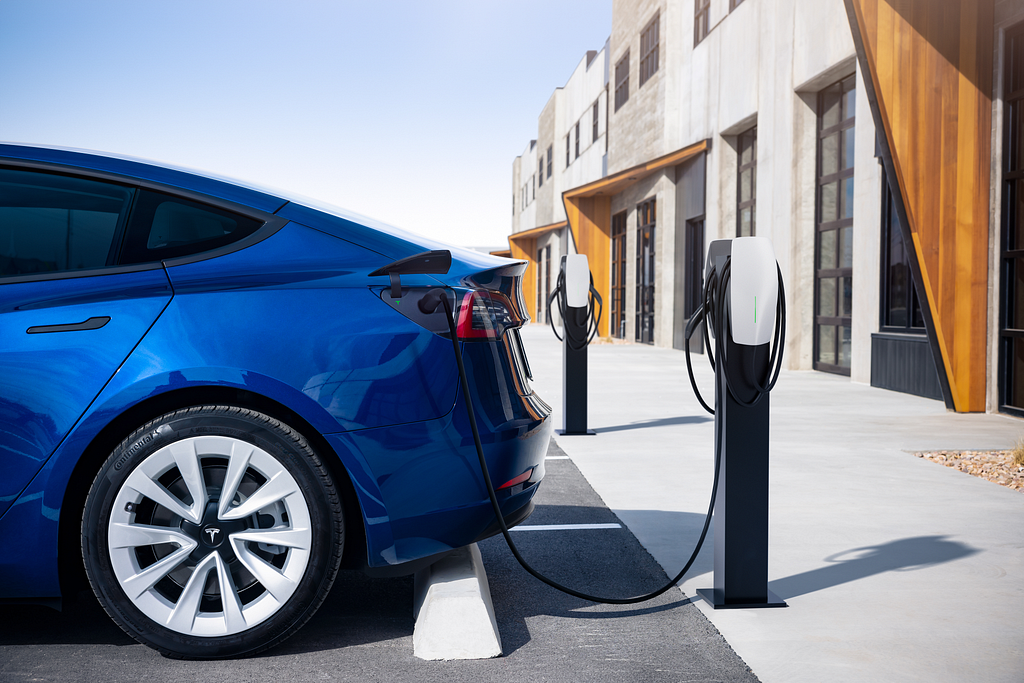Tesla has released a 2022 Impact Report that highlights the surprising lifespan and efficiency of Tesla’s battery design.
Battery Degradation/Lifespan
The most impressive statistic: after 200,000 miles, Tesla batteries degrade just 12%.
200,000 miles is widely-considered to be the standard lifecycle of an internal-combustion engine vehicle.
Therefore, Tesla’s battery packs retaining 88% of their initial capacity after 200,000 miles showcases their astonishing long-term usability.
This data is based on over a decade of real-world usage, primarily in regard to previous-generation lithium-ion batteries.
To put this into perspective, a Model S that ships with 405 miles of EPA-rated range would retain a range in excess of 356 miles over 200,000 miles — both equally usable figures by our calculation, as 200 miles has long been considered the standard for when electric vehicles become practical for extended distances.
Anecdotally, Tesla owners seem to be more concerned with battery failure or present-day range on a used Tesla rather than replacement battery modules. Tesla offers a generous battery warranty of up to 8 years or 150,000 miles that accounts for this.
Industry-Leading Efficiency
The latest Model Y All-Wheel Drive configuration achieves an EPA-rated 4.0 miles per kWh, making it the most efficient electric SUV released to date.
Tesla compounds this fact by highlighting the performance of its vehicles, which approaches 3.1 seconds on Model 3 Performance.
This is doubly impressive considering that Model Y All-Wheel Drive utilizes 4680 battery cells, which is a next-generation battery platform designed by Tesla that’s only beginning to demonstrate its efficiency and cost-saving capabilities.
Model Y All-Wheel Drive is also one of Tesla’s most affordable vehicles, with a present-day starting price of $46,990 before incentives.
Model 3 Rear-Wheel Drive offers a similar level of efficiency, even if it isn’t class-leading within its segment.
Reduced Cost of Ownership
Tesla equates the lifetime cost-of-ownership of a Model 3 to be more similar to a Toyota Corolla than a BMW or Audi.
This is attributed to three key factors:
- Reduced maintenance costs, which are relatively minimal.
- A cheaper cost of electricity compared to the volatility of gasoline.
- “High residual value of used Tesla vehicles.” — This is typically considered to be industry-leading, despite recent price drops.
The comparison used for a 5-year cost-of-ownership has Model 3 Rear-Wheel Drive equating to $.49/mile, as compared to $.46/mile for a Toyota Corolla when considering depreciation, insurance, maintenance, and fuel.
Tesla made the cost of its vehicle platform 50% cheaper with Model 3 and Model Y, with plans for a further 50% targeted cost reduction on the next-generation vehicle platform that will power vehicles like Robotaxi. A large part of this is via more efficient battery design and effective production.
Affordability is Tesla’s goal going forward to produce 20-million vehicles annually by 2030.
A Functioning Supercharger Network
The average uptime of a Supercharger site in 2022: 99.95%
Vehicles with such comprehensive platforms require an equally comprehensive charging network, and Tesla has accomplished that with its Supercharging Network.
No other electric vehicle fast charging network comes close to offering the same level of reliability.
It’s what makes unlimited Lifetime Supercharging promotions so desirable, and Tesla’s vehicles so practical for virtually every possible buyer.
This is accomplished at 45,000-plus global Superchargers, with many more on the way.
Reliability of Energy Storage Products
Tesla’s energy storage products carry a collective failure rate of less than 0.001%.
Tesla’s energy storage products, including Powerwall and Megapack, exceed industry standards.
In fact, failure rates are lower than transformer fires.
Like Tesla’s vehicles, Tesla’s energy storage products can be updated over-the-air to improve performance and safety.
It also provides energy production that’s cheaper than typical solutions, which is necessary for transitioning the grid over to Tesla’s energy storage.
Electric Vehicles Require Less CO2e Than Gasoline Vehicles
Tesla’s vehicles use 37 tons CO2e per vehicle, as compared to 93 tons CO2e on average for a gasoline vehicle.
An electric vehicle’s CO2e emissions are primarily upfront due to the complex production of battery packs followed by aluminum and steel enclosures, and other aspects of the vehicle.
It begins to outdo internal-combustion engine vehicles after two years, then becoming more beneficial over its lifetime in emission savings.
This is a common argument used against electric vehicles that will only improve over time, eventually resulting in dramatically reduced lifecycle emissions.
Diversified, Direct Battery Sourcing
Tesla’s roadmap plans for diversified cathode materials, as well as direct sourcing contracts to keep costs consistent.
These materials range from lithium, nickel, cobalt, and aluminum or manganese for higher-energy NCA/NCM applications.
Lower-energy applications will use LFP batteries made up of lithium, iron ore, and phosphorus.
All batteries share an anode comprised of copper and graphite.
Tesla was able to keep lithium hydroxide cost consistent between 2021 and 2022.
Nickel costs saw the largest increase of 15%, and cobalt costs also rose by 5%.
Master Plan Part 3
Tesla’s battery products are in idyllic shape to optimistically transition the world to a sustainable energy economy by 2050.
__________________
Interested in Listing or Upgrading YOUR Tesla? The BEST place to get TOP dollar for your used Tesla. MADE IN NYC
Browse the listings now: Only Used Tesla
Buy or list your premium electric vehicle: OnlyEV
Or feel free to contact us directly at contact@onlyusedtesla.com today!

Comments